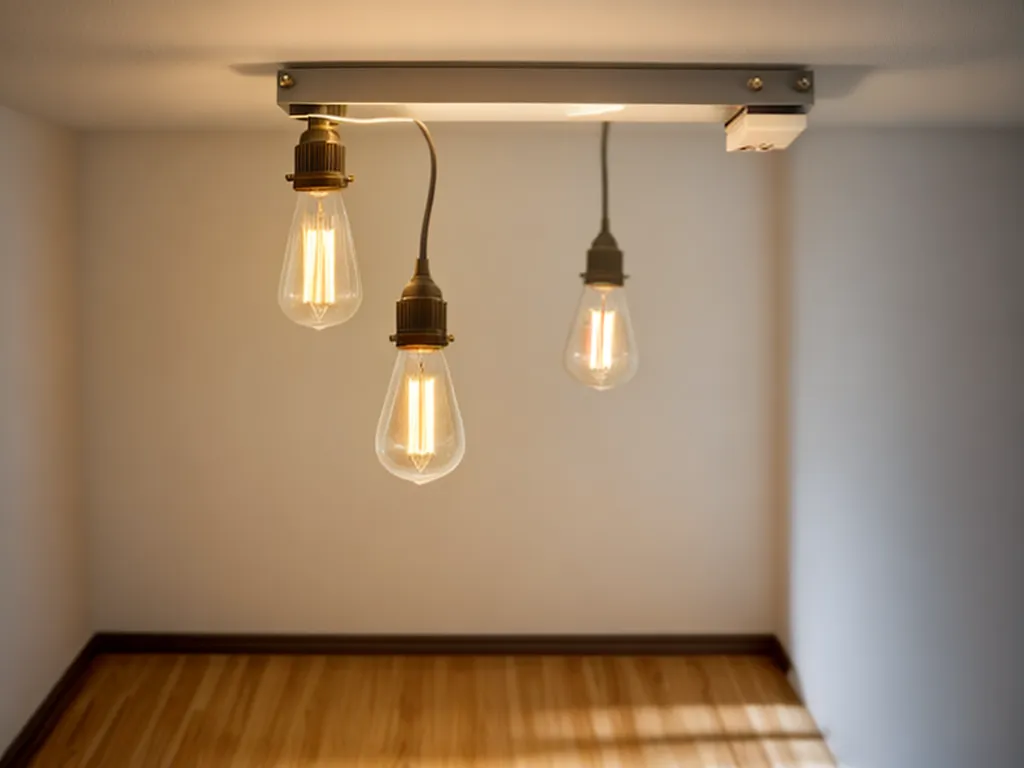
Low-voltage lighting has become a popular choice for homeowners looking to accent certain spaces or highlight architectural features in their homes. While low-voltage lighting has traditionally been used for exterior installations, advancements in LED bulb technology have made low-voltage systems an attractive, energy-efficient option for interior spaces as well.
Installing a low-voltage lighting system in your home is a project a dedicated DIYer can tackle over a weekend. However, careful planning and adherence to electrical codes are required for a safe and effective installation. This guide will walk you through the end-to-end process of installing low-voltage lighting in your home.
Determine the Location and Purpose of the Lighting
The first step is deciding where you want to install low-voltage lighting and what purpose it will serve. Common locations for low-voltage lighting include:
- Accent lighting in living rooms, bedrooms, and dining rooms
- Task lighting in kitchens, home offices, and workshops
- Architectural lighting to showcase crown molding, tray ceilings, and other unique architectural details
- Outdoor lighting along pathways, in gardens and landscaped areas
You should think about the overall look and feel you want to achieve. For example, do you want to highlight a particular architectural feature? Create a relaxing ambience in the bedroom? Or simply improve visibility for tasks in a specific area? The purpose of the lighting will help determine the right locations, bulb types, and fixtures.
Choose Fixtures, Bulbs, and Accessories
Once you have determined the purpose and locations, the next step is selecting the low-voltage lighting components:
Fixtures
Low-voltage lighting systems use centralized transformers to step down standard 120V household current to 12V. From the transformer, two wires - positive and negative - run to individual light fixtures.
Fixtures come in a variety of shapes and sizes. Common types include:
- Track lighting: Flexible linear lights that can be positioned anywhere along a track
- Rail lighting: Similar to track lighting but mounted directly to the wall or ceiling
- Puck lights: Compact, round fixtures ideal for accenting cabinets, shelves, and displays
- Strip lighting: Flexible LED strip lights that can be hidden behind trim and molding
Consider the space you want to light and the aesthetic you want to achieve. Fixtures should suit both the purpose and the room's decor.
Bulbs
Low-voltage bulbs are available in several common types:
- Incandescent: Budget-friendly option providing a warm, yellowish light. Not as energy-efficient as LED.
- Halogen: Slightly more efficient than incandescent with crisp, bright light.
- Xenon: Produce a daylight-esque light. More expensive but long lasting.
- LED: Most efficient option with long lifespans. Available in a range of color temperatures.
You may need bulbs with different attributes depending on the purpose. For general living areas, a warm 2700-3000K LED bulb is recommended. For task lighting, cooler 5000K LEDs are better suited.
Accessories
Other components you'll need include:
- Low-voltage wiring: Typically 18 or 16-gauge, 2-conductor wire for runs from the transformer to fixtures.
- Transformer: Steps down 120V current to 12V. Size it to handle the total wattage of all bulbs.
- Junction boxes: Required for housing connections and splicing wires.
- Timers, dimmers, and remotes: Controls for adjusting light intensity, scheduling, etc.
Shop for high-quality, UL-approved components designed for low-voltage systems. Cheaper alternatives may lack safety features or durability.
Determine the Layout and Install the Transformer
Now it's time to map out the lighting layout. Consider:
- The total wattage of all bulbs
- The maximum run length from the transformer to each fixture
- Locations for the transformer and any required junction boxes
- How the wiring will be routed through walls and ceilings
Generally, the transformer should be centrally located. Confirm you have an adequate 120V power source at the desired location. Mount the transformer securely using the included hardware.
Run the Wiring to Fixtures
With the transformer installed, you can start running the low-voltage wiring. Key steps include:
- Use the manufacturer's recommended wire gauge for the run lengths. Longer runs may require thicker gauge wire.
- Neatly run wires through walls and ceilings using staples or clips. Follow local building codes.
- Use junction boxes to split the wiring into multiple directions or branches.
- Leave 6-12 inches of extra wire at fixture locations for connections.
- Take care not to nick or damage wire insulation during installation.
Correct polarity is crucial - connect positive wires to positive terminals and negative to negative.
Mount the Fixtures
Once wiring is pulled, it's time to mount the light fixtures. Consult the manufacturer's instructions for mounting details. Some tips:
- Ensure electrical power is OFF before making any connections.
- Make secure wire connections using twist-on wire connectors.
- Attach fixtures securely using the provided mounting hardware.
- Avoid compressing or damaging wires during mounting.
- For track and rail lights, use provided conductors to transmit power.
Take care to position adjustable fixtures to your desired angle during installation.
Install Bulbs, Test the System, and Finish Up
You're nearly done! Follow these final steps:
- Screw in the light bulbs, being careful not to touch the glass with bare hands.
- Restore power and test all fixtures. Verify proper operation and brightness.
- Use any provided lens, covers, or diffusers to finish fixture installation.
- Clean up any fingerprints or smudges on fixtures using a microfiber cloth.
- Caulk around fixtures to create an airtight seal and prevent drafts. Allow caulk to fully cure.
Be sure to keep the transformer manual and any fixture instructions for future reference.
With some planning and attention to detail, installing low-voltage lighting in your home is an achievable project for a dedicated DIYer. Properly installed, a low-voltage system will provide beautiful, energy-efficient lighting that enhances your home's aesthetics for years to come. Enjoy your new accent and task lighting!